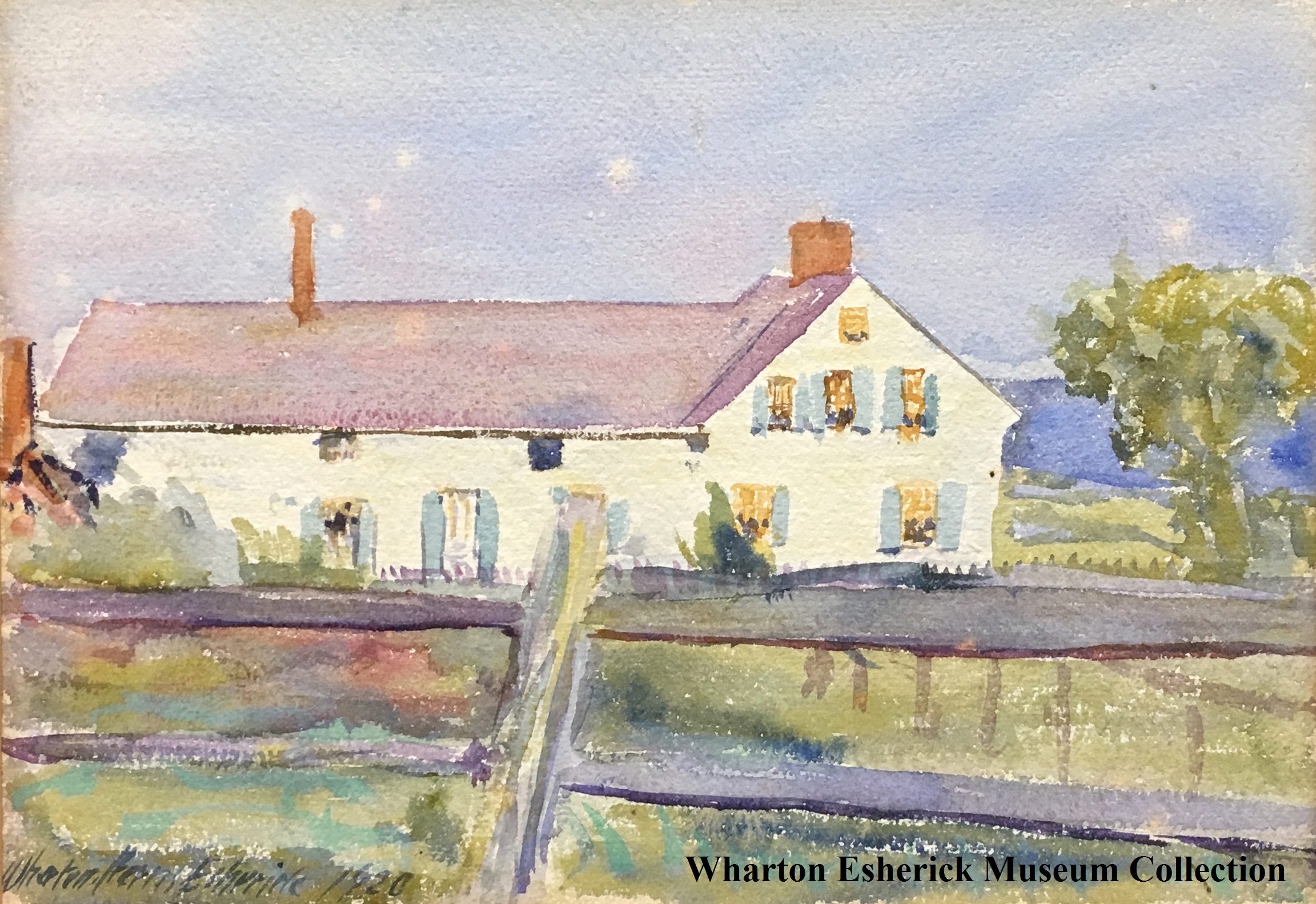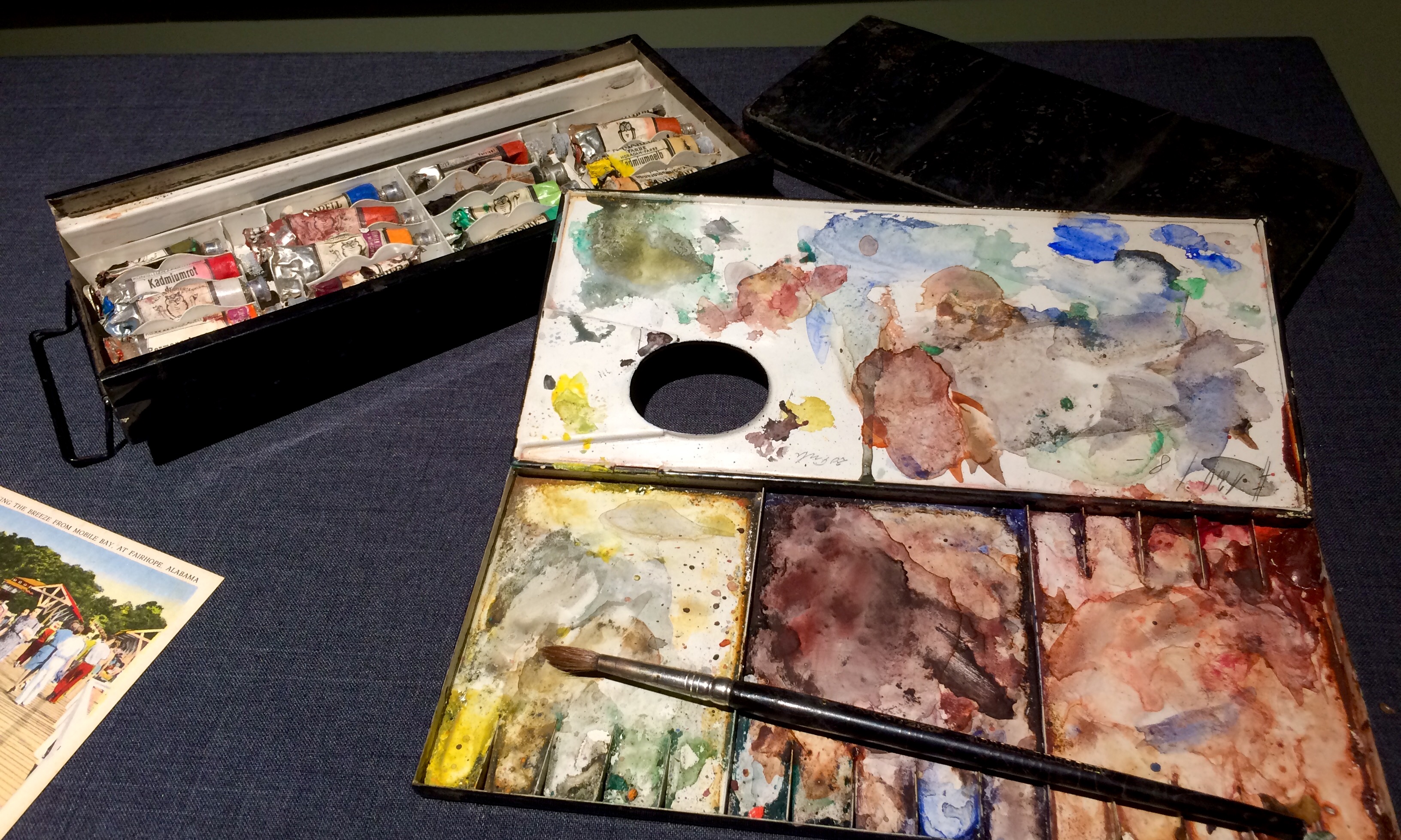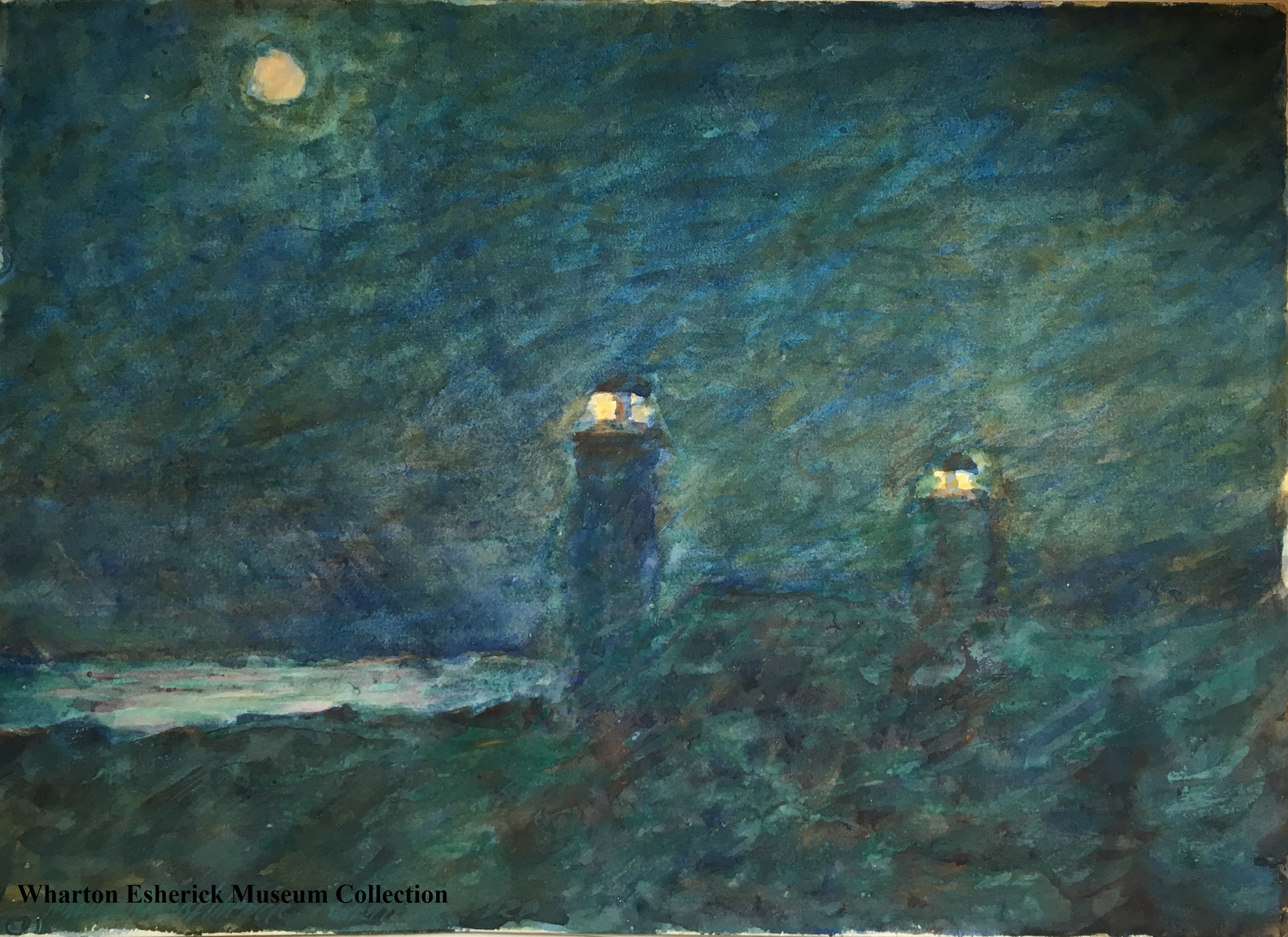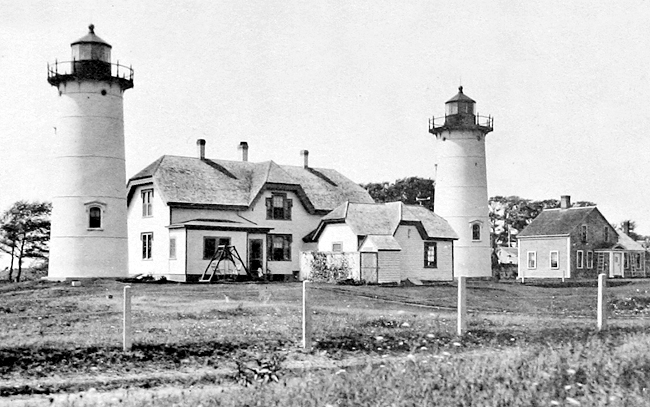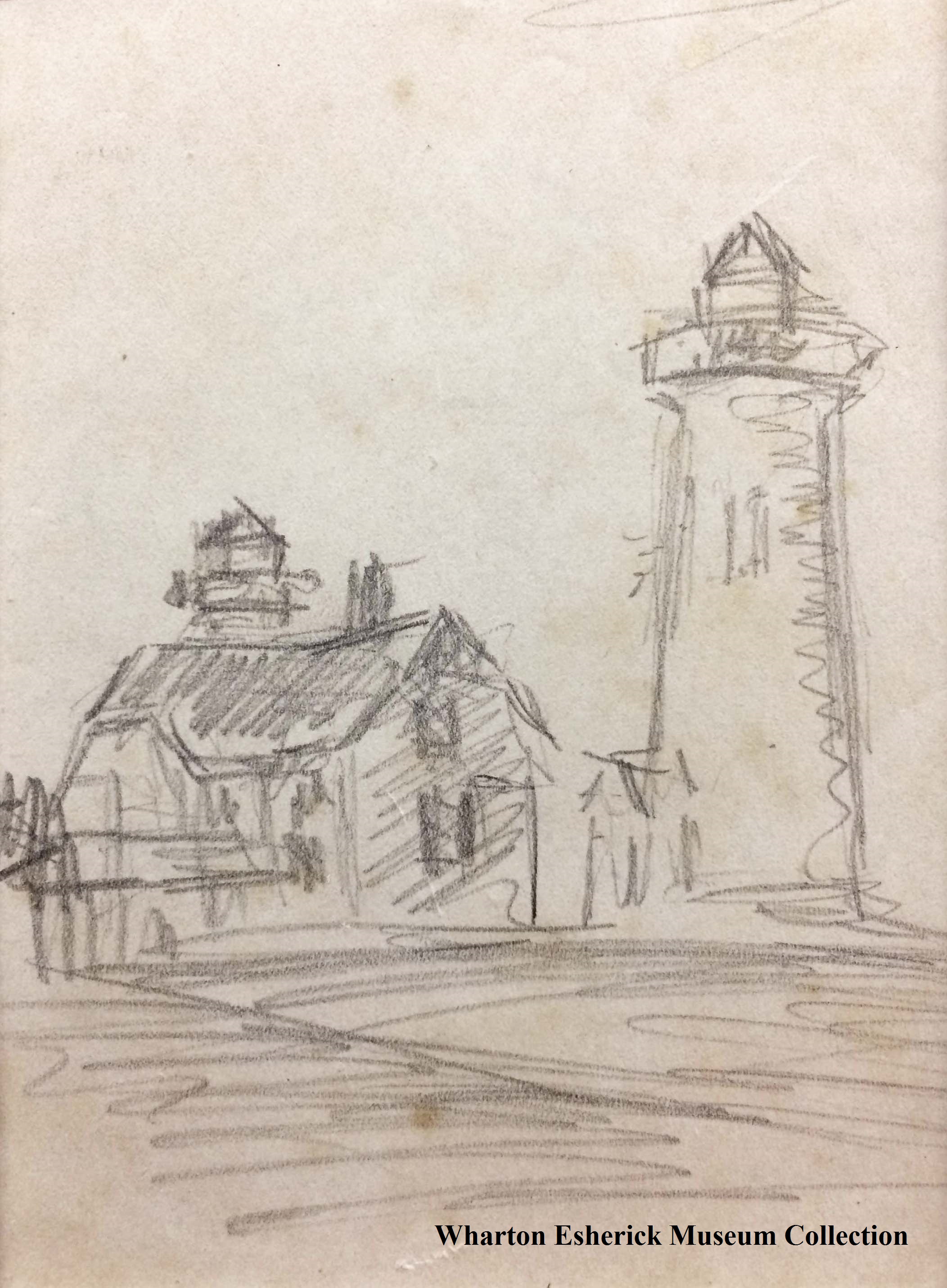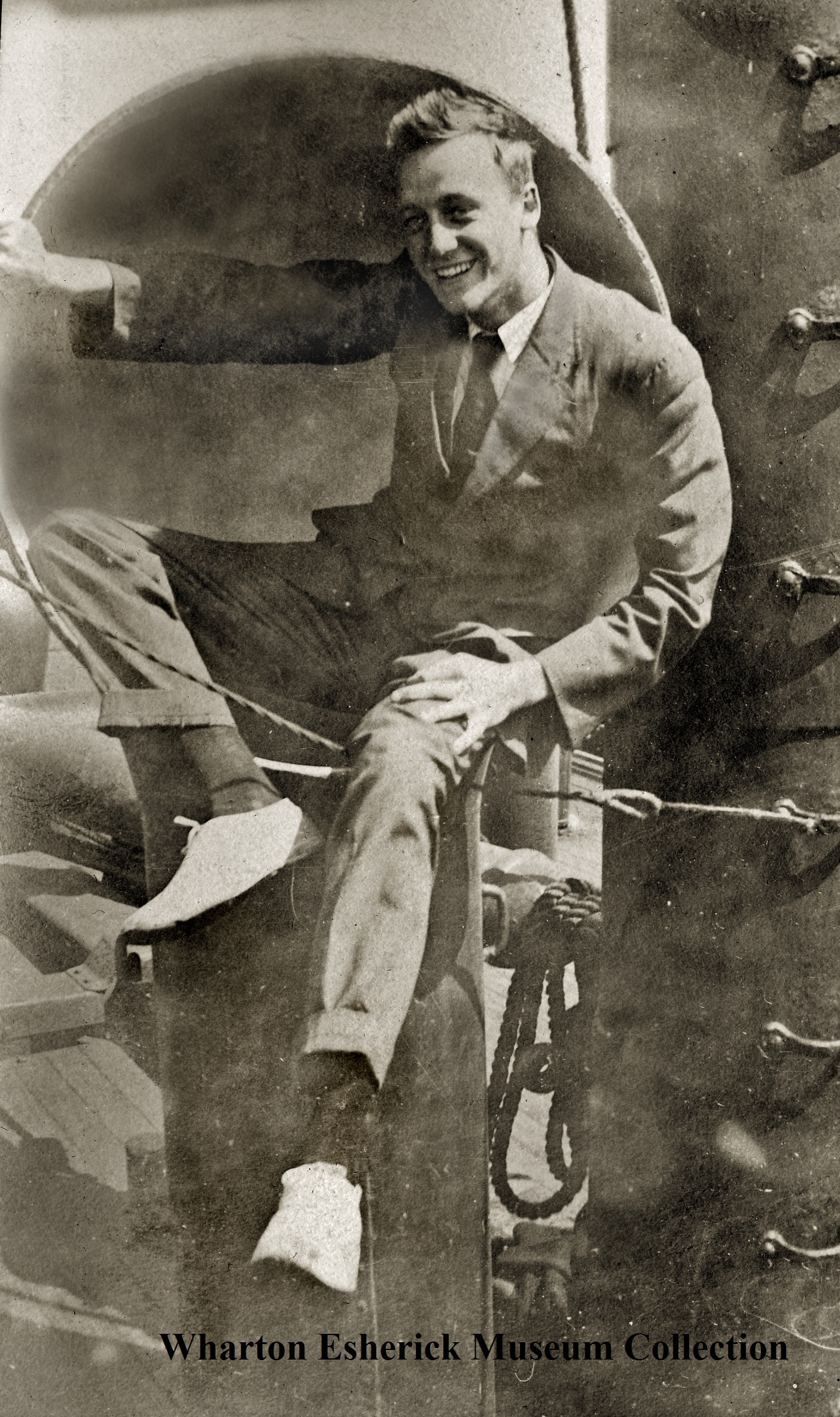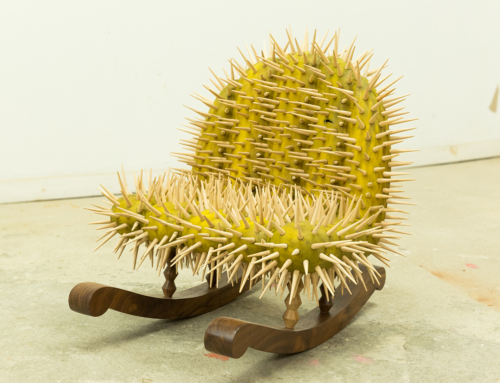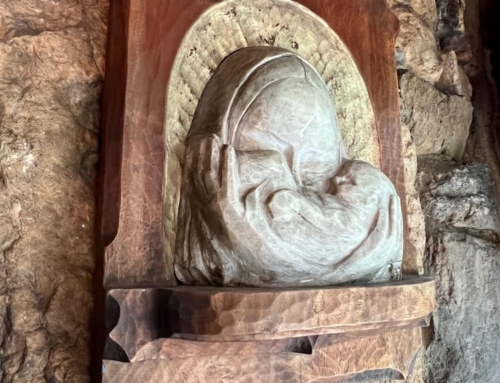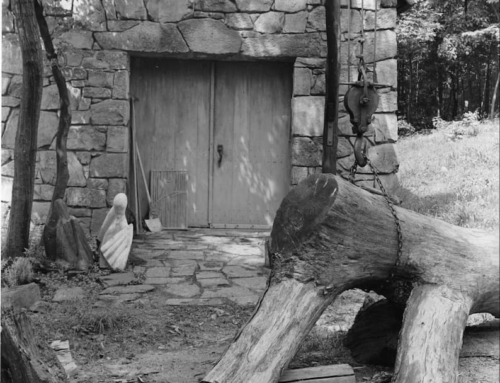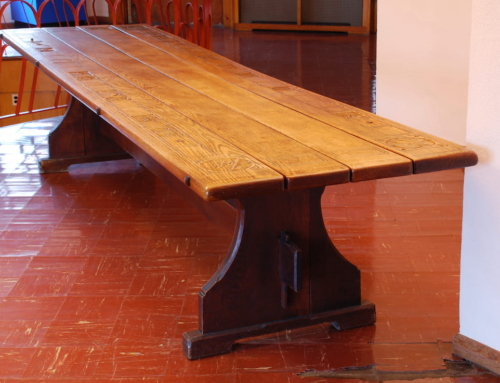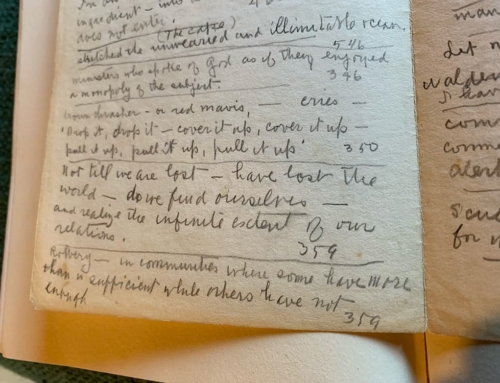There are just two weeks left to check out our latest exhibition, Wanderlust: Wharton’s Travels in Watercolor, which highlights paintings completed by Wharton Esherick between 1919 and 1920 while he traveled with his family up and down the east coast. Many guests to the Museum are surprised to learn that Wharton began his career as a painter, since he is best remembered for his creations in wood. In fact, he studied painting at the Philadelphia Museum School of Industrial Art (which later became the University of the Arts) and the Pennsylvania Academy of Fine Arts (PAFA) where he studied under distinguished painters including Thomas Anschutz, Cecilia Beaux, and William Merritt Chase.
Impressionist style painting, which Wharton studied, encouraged the artist to take their paints out of the studio and paint en plein air (outdoors). Wharton loved to paint from nature, often taking his painting supplies and wandering the area near their home, as well as on their family travels. Ultimately, Wharton would leave PAFA in search of his own unique voice, but he would always maintain his love of nature and the inspiration it brought him.
There are 18 watercolors on view in the exhibition, several of which were done while visiting Cape Cod. Wharton depicted the seaside cottages, gulls, and fisherman at their daily tasks with care. One painting, “Chatham Lights”, is particularly striking, perhaps because it is the only nightscape in the show. Wharton captured in this painting the twin lighthouses at Chatham with their lights glowing brightly under a full moon. The palette is deep and moody, placing emotional tone over the capable draftsmanship we see in the “daytime” paintings. In fact, without the twin lights, it would be difficult to identify the site at all.
Chatham, which is right on the “elbow” of Cape Cod established twin lighthouses in 1808 as a way of distinguishing it from Highland Light in Truro, MA further up the arm of the Cape. In 1841, due to coastal erosion, new brick towers were constructed further inland, though continual erosion caused the south tower to fall in 1879. New, cast iron towers were then constructed even further inland, and these are the towers Wharton saw during his visit in 1920. Three years after Wharton’s visit, the northern tower was moved 12 miles north to become Nauset Light in Eastham.
While Cape Cod’s sandy shores have drawn beachgoers for hundreds of years, it’s views have called to artists. In 1896, Charles Hawthorne, who had also studied under William Merritt Chase, opened The Cape School of Art in Provincetown, which would become one of the largest art colonies in the world. Over the years, many artists painted Cape Cod, including Edward Hopper, William Paxton, and Childe Hassam. Others continued to establish schools of their own on the Cape, like Hans Hoffman’s Summer School of Art, or the Fine Art Work Center, both breathing new life into Provincetown’s artistic community.
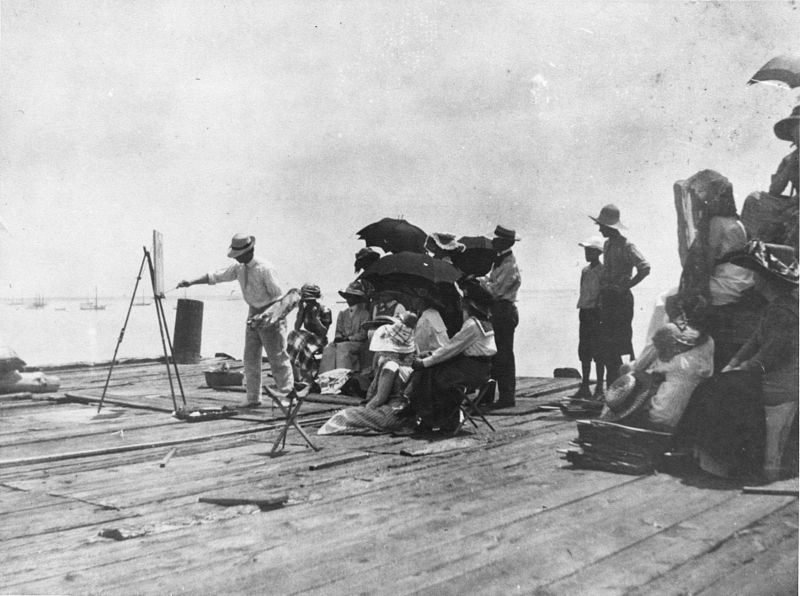
Charles Hawthorne instructing a painting class in Provincetown, c. 1910. Image in the public domain via wikipedia.
Esherick, of course, would find his own haven for making art in the solitude of the Pennsylvania woods. Just months before he painted “Chatham Lights,” he had received a set of carving tools and was making his first forays into woodworking. These tools were given to him at a different sort of artist colony, a single-tax community in Fairhope, Alabama, where artists, writers, educators and all sorts of progressive thinkers were coming together to exchange ideas. It was there he began carving frames for his paintings – which he soon found got a bigger response than the paintings themselves! The story of Fairhope is one for another time (and another post) but it reminds us of the way these early adventures change and inform one’s life. While Esherick would find his voice in wood, those early years as a painter shaped him, as he observed and studied the world around him. As Edward Hopper wisely put it, “In every artist’s development, the germ of the later work can be found in the earlier. What he was once, he always is.”
More on the history of artists in Provincetown can be found here:
http://www.iamprovincetown.com/history/art-colony-history.html
Our current exhibition Wanderlust: Wharton’s Travels in Watercolor, curated by Laura Heemer, is on view through September 3, 2017.
Post written by Curator, Laura Heemer and Visitor Experience and Program Specialist, Katie Wynne.

